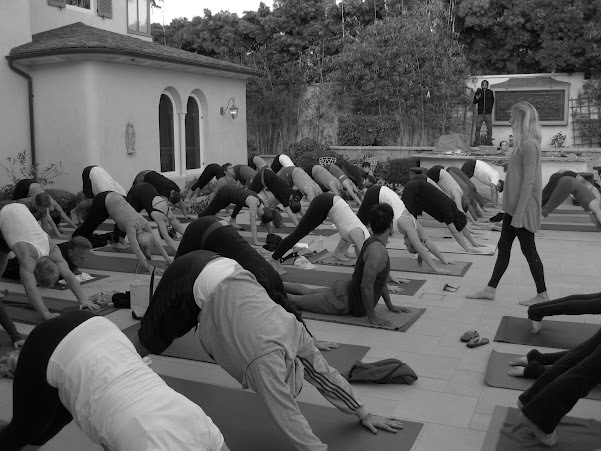Teaching yoga to experienced yogis is much easier than teaching beginners. People who have been practicing for a while are familiar with the postures, understand the importance of the breath, and often know how to modify and when to go deeper. Effectively teaching beginners requires more thought and skill. All teaching should be clear, concise and well thought out, but even more so for beginners. They may have injuries, lack body awareness and have a difficult time staying connected to the breath. Here are a few tips for teaching beginners that I’ve picked up in the decade I’ve been teaching:
Always begin class in a comfortable position. Child’s pose and sitting cross-legged are rarely comfortable for beginners. In more physically challenging classes, these are two of the most common asanas (poses) with which teachers start classes. But beginners often can’t bring their hips all the way to their heels in child’s pose, nor are they able to sit cross-legged with a straight spine. These factors make these poses uncomfortable and therefore, not a good way to begin a class. There are props you can use to make these postures more comfortable, but not every studio is stocked with enough blankets, blocks or bolsters for everyone who needs them. So my go-to poses to begin my Hatha classes are either lying on the back, or standing in Tadasana.
Teach the breath. Once the students are in a comfortable position, they will connect with the breath more easily. Creating and maintaining a connection to the breath is perhaps the most important aspect of yoga practice and should be strongly emphasized throughout the class. The breath should be natural, through the nose and consistent. Allow them to find this connection before they start moving so they are able to put their full attention on their breath. Start with very simple movements that flow with the breath. Once the students are breathing, teach a simple sequence such as half sun-salutes, cat-cow, down-dog to all fours, child’s-pose to all fours, etc. They will also be able to ease into more difficult postures and transitions while maintaining their breathing.
Always teach from the earth up. Beginners tend to lack body-awareness, so teaching alignment in a systematic way will minimize confusion and keep the class flowing more smoothly. For example, when teaching standing poses, start by explaining the positioning of the feet, move to the pelvis, and then the shoulders and neck. If you jump around the body with different alignment cues, the student will get confused and tune you out. Keep it simple and teach from the earth up.
Be concise. Don’t be too wordy when teaching alignment or the breath. Try to keep your directions clear and simple. There are always at least a dozen things you could point out for every pose but pick one or two to emphasize and then zip it. You don’t want to overload the students’ minds and make them worry that they are doing everything wrong. Give them space by allowing for moments of quiet throughout the class.
Don’t hover. Sometimes students have a really tough time even in the simplest of classes. Avoid hovering over them and correcting their every move. Make sure they aren’t doing anything that would cause injury, give them some light adjustments and move on. If you are all over them, they might feel like everything they are doing is “wrong” and they will have no time to just feel and breathe.
These tips apply to teaching at any level but are especially important for teaching beginners. One of our most important objectives as yoga teachers is to create a comfortable space for people to come and not feel judged or competitive. Try to teach people to enjoy the process and if they keep practicing, the transformation they are seeking is sure to come.


Leave a Reply
You must be logged in to post a comment.